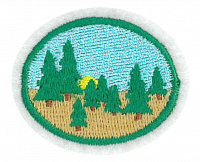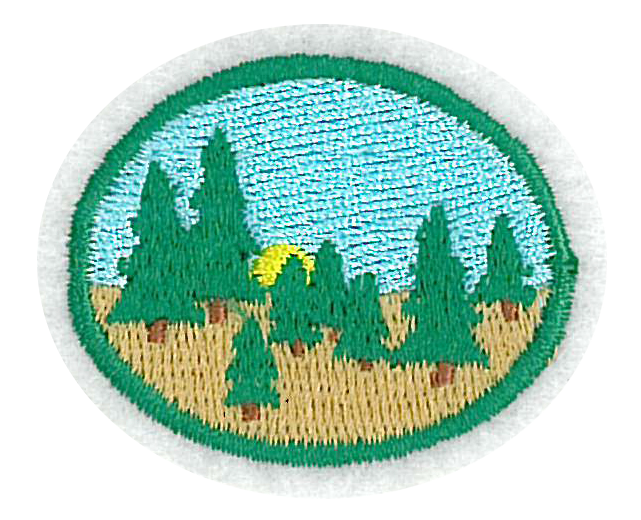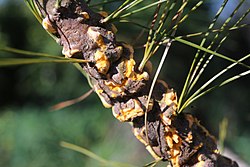Difference between revisions of "AY Honors/Taiga/Answer Key/es"
(Created page with "</noinclude> <!-- 4. ¿Cuál bioma se encuentra al norte y al sur de la taiga? -->") |
(Created page with "<noinclude>") |
||
| Line 26: | Line 26: | ||
{{CloseReq}} <!-- 4 --> | {{CloseReq}} <!-- 4 --> | ||
{{ansreq|page={{#titleparts:{{PAGENAME}}|2|1}}|num=5}} | {{ansreq|page={{#titleparts:{{PAGENAME}}|2|1}}|num=5}} | ||
| − | <noinclude> | + | <noinclude></noinclude> |
| − | </noinclude> | + | <!-- 5. ¿Cuál bioma usualmente se encuentra en las áreas bajas de la taiga? --> |
| − | <!-- 5. | ||
| − | |||
| − | |||
| − | + | <noinclude></noinclude> | |
| − | <noinclude | ||
| − | |||
{{CloseReq}} <!-- 5 --> | {{CloseReq}} <!-- 5 --> | ||
{{ansreq|page={{#titleparts:{{PAGENAME}}|2|1}}|num=6}} | {{ansreq|page={{#titleparts:{{PAGENAME}}|2|1}}|num=6}} | ||
| − | <noinclude> | + | <noinclude></noinclude> |
| − | </noinclude> | + | <!-- 6. ¿Qué es el permagel y dónde se encuentra? --> |
| − | <!-- 6. | ||
| − | |||
| − | |||
| − | + | <noinclude></noinclude> | |
| − | <noinclude | ||
| − | |||
{{CloseReq}} <!-- 6 --> | {{CloseReq}} <!-- 6 --> | ||
{{ansreq|page={{#titleparts:{{PAGENAME}}|2|1}}|num=7}} | {{ansreq|page={{#titleparts:{{PAGENAME}}|2|1}}|num=7}} | ||
| − | <noinclude> | + | <noinclude></noinclude> |
| − | </noinclude> | + | <!-- 7. ¿Cuáles árboles se encuentran comúnmente en la taiga? Ser capaz de identificarlos. --> |
| − | <!-- 7. | ||
| − | |||
| − | |||
| − | |||
| − | |||
| − | |||
| − | |||
| − | |||
| − | |||
| − | + | {{clear}} | |
| − | |||
| − | |||
| − | |||
| − | |||
| − | |||
| − | |||
| − | |||
| − | + | <noinclude></noinclude> | |
| − | <noinclude | ||
| − | |||
{{CloseReq}} <!-- 7 --> | {{CloseReq}} <!-- 7 --> | ||
{{ansreq|page={{#titleparts:{{PAGENAME}}|2|1}}|num=8}} | {{ansreq|page={{#titleparts:{{PAGENAME}}|2|1}}|num=8}} | ||
| − | <noinclude> | + | <noinclude></noinclude> |
| − | </noinclude> | + | <!-- 8. ¿Cuál árbol conífero en la taiga pierde sus hojas en el otoño y crece nuevas en la primavera? --> |
| − | <!-- 8. | ||
| − | |||
| − | |||
| − | + | <noinclude></noinclude> | |
| − | <noinclude | ||
| − | |||
{{CloseReq}} <!-- 8 --> | {{CloseReq}} <!-- 8 --> | ||
{{ansreq|page={{#titleparts:{{PAGENAME}}|2|1}}|num=9}} | {{ansreq|page={{#titleparts:{{PAGENAME}}|2|1}}|num=9}} | ||
| − | <noinclude> | + | <noinclude></noinclude> |
| − | </noinclude> | + | <!-- 9. ¿Cuáles plantas no-florecientes son comunes en la taiga? Ser capaz de identificarlas. --> |
| − | <!-- 9. | ||
| − | |||
| − | |||
| − | |||
| − | |||
| − | |||
| − | |||
| − | + | <noinclude></noinclude> | |
| − | <noinclude | ||
| − | |||
{{CloseReq}} <!-- 9 --> | {{CloseReq}} <!-- 9 --> | ||
{{ansreq|page={{#titleparts:{{PAGENAME}}|2|1}}|num=10}} | {{ansreq|page={{#titleparts:{{PAGENAME}}|2|1}}|num=10}} | ||
| − | <noinclude> | + | <noinclude></noinclude> |
| − | </noinclude> | + | <!-- 10. ¿Cuáles animales se encuentran comúnmente en la taiga? Ser capaz de identificarlos. --> |
| − | <!-- 10. | ||
| − | |||
| − | |||
| − | |||
| − | |||
| − | |||
| − | |||
| − | |||
| − | |||
| − | |||
| − | |||
| − | + | <noinclude></noinclude> | |
| − | <noinclude | ||
| − | |||
{{CloseReq}} <!-- 10 --> | {{CloseReq}} <!-- 10 --> | ||
{{ansreq|page={{#titleparts:{{PAGENAME}}|2|1}}|num=11}} | {{ansreq|page={{#titleparts:{{PAGENAME}}|2|1}}|num=11}} | ||
| − | <noinclude> | + | <noinclude></noinclude> |
| − | </noinclude> | + | <!-- 11. ¿Cuáles aves son comunes en la taiga? Ser capaz de identificarlas. --> |
| − | <!-- 11. | ||
| − | |||
| − | |||
| − | |||
| − | |||
| − | |||
| − | |||
| − | |||
| − | |||
| − | |||
| − | |||
| − | + | <noinclude></noinclude> | |
| − | <noinclude | ||
| − | |||
{{CloseReq}} <!-- 11 --> | {{CloseReq}} <!-- 11 --> | ||
{{ansreq|page={{#titleparts:{{PAGENAME}}|2|1}}|num=12}} | {{ansreq|page={{#titleparts:{{PAGENAME}}|2|1}}|num=12}} | ||
| − | <noinclude> | + | <noinclude></noinclude> |
| − | </noinclude> | + | <!-- 12. ¿Cómo los incendios afectan a la taiga? --> |
| − | <!-- 12. | ||
| − | |||
| − | |||
| − | |||
| − | |||
| − | + | <noinclude></noinclude> | |
| − | <noinclude | ||
| − | |||
{{CloseReq}} <!-- 12 --> | {{CloseReq}} <!-- 12 --> | ||
{{ansreq|page={{#titleparts:{{PAGENAME}}|2|1}}|num=13}} | {{ansreq|page={{#titleparts:{{PAGENAME}}|2|1}}|num=13}} | ||
Revision as of 14:40, 23 April 2021
1
2
3
4
5
6
7
8
9
10
11
12
13
- a. Softwood for lumber and paper.
- b. Vast wilderness and forests for outdoor recreation.
14
White Pine Blister Rust – This fungus was introduced into the taiga of North America from Asia. The spores from this fungus first infect Gooseberries and/or Wild Currants. It then spreads to the needles of white pines (pines with 5 needles in each cluster) and eventually kills the pine tree when it reaches the bark of the tree's trunk.
15
Here is one example:
It is only when burned by fire that a cone from a Jack Pine will open (explode from the heat). The seeds are released from the cone and new life begins. Like the fire, trials in our lives sometimes cause us to do or learn new things that can truly bless us if we rely on God for our strength and direction.
"And we know that all things work together for good to them that love God" - Romans 8:28
16
16a
Look for an Arboretum, or perhaps a place that explains about the lumber business. Often there will be a local park focused on trees, or some other place like a zoo might double as an Arboretum.
16b
16c
Si piensa visitar un zoológico o acuario, tenga en cuenta que hay varias especialidades que tienen requisitos que se pueden cumplir visitando un zoológico o acuario. Los individuos pueden trabajar en varias especialidades en una visita, o partes de su grupo pueden trabajar en diferentes especialidades durante la misma visita.
Aquí hay una lista de especialidades que tienen requisitos que se pueden cumplir visitando un zoológico o acuario:
Bosques templados caducifolios
16d
16e
16f
16g
16h



